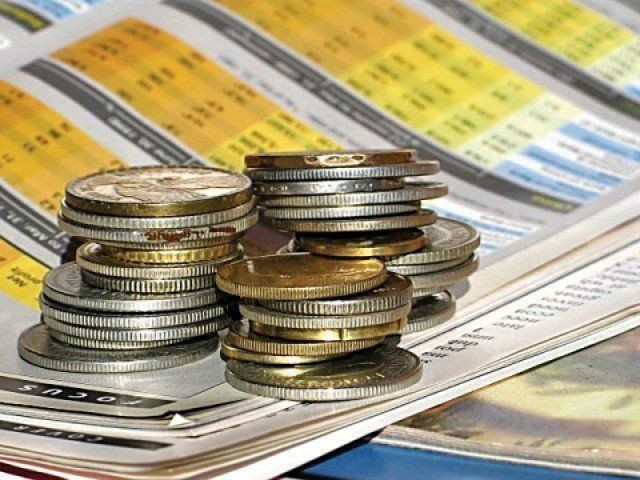Can Pakistan buy back its Eurobonds?
Borrowing at 9-11% to buy instruments at 20-30% returns is good profitable trade

Efficient management of companies – as well as countries – demands eyeing every opportunity to make every single day and penny count. It is no wonder then, that global executives are constantly on the look-out to deploy assets, where financial jiggery-pottery is used, to structure ways to increase profits.
Perhaps, Pakistan’s policy makers should also comprise of similar wizards who can find innovative ways of creating wealth. One such option is possibly buying back the global debt and bonds issued.
To explain the concept: Pakistan raised US dollars (via a loan) in the international market. This was done by floating a few billion-dollar worth of instruments at a defined sovereign backed profit rate. Once the government raises the dollars, these instruments trade in a “secondary” market to provide ability to sell or buy (liquidity), to current and potential investors.
If the bond was issued at notional (face value) say $100, it may get priced higher at times when a country is doing well and demand is greater – conversely, it may be priced lower if the country is doing poorly.
As a direct result of political instability since regime change, delays over the International Monetary Funds (IMF) resuming its programme and tight global conditions, Pakistan’s dollar bonds issued at $100 are trading at a $35-$45 rate in the secondary markets. In other words, anyone buying at today’s rate would be getting an $8-9/per year profit on a purchase price of $35-$45, thereby getting 20-30% profits.
The fall in price is also a function of falling credit worthiness – seen as global credit watchdogs downgraded Pakistan’s ability to repay loans, increasing default profitability amid falling foreign exchange (FX) reserves.
This presents an opportunity. Even in the domestic bourse, Pakistan Stock Exchange (PSX), there are several examples of countries with financially sharp management buying back their shares (as they see long-term value) for example, Lucky Cement, Engro Corporation, Kohinoor Textile, JDW Sugar etc.
The reason why these corporates are actively engaging in such activities is an alignment of interest. Owners (seths) make money the right way while senior managers get rewarded with hefty bonuses. If only policy makers were to operate with such a fierce attitude towards finding timely windfall opportunities.
There also are a myriad example of countries buying back their debts; this year, Argentina – a country with a poorer economic record than Pakistan’s – sent across shockwaves as it announced the $1 billion bond buyback program despite being closely handheld by the IMF.
In 2022, El Salvador bought bonds worth $565M. In 2021, Indonesia announced a bond sale of $1.84 billion to buy back global bonds worth $1.16 billion.
Ecuador successfully bought back bonds in 2009 and issued another $1.125 billion in 2019 to buy back bonds. Even war-mired Russia announced a pre-emptive buyback of $2 billion last year to allay market concerns of financial distress.
Naturally, the next big question is: how do you finance these bonds? Well, instead of going into the global markets to issue new debt to buy old ones, Pakistan can try raising this capital using US dollars being kept by Pakistanis themselves in two ways:
1) A short term, time bound and amount bond scheme should be launched to attract dollars from overseas Pakistanis in Naya Pakistan Certificates (NPC) at 10-12% until the targeted $3-5 billion bonds are raised.
2) A similar window should be offered to US dollar account holders in Pakistan – individuals and corporates – at 9-11% to reduce hoarding under the carpet, bring dollars back in the banking system and enhance FX buggers.
While naysayers will find faults in offering such exorbitant profit rates on US dollar denominated debts, borrowing at 9-11% to buy instruments at 20-30% annual returns is a darn good profitable trade.
Messaging, however, is critical in this exercise. Policy makers should make firm commitments that savings of $0.5-2 billion – depending upon the risk appetite, courage and market conditions – will be categorically utilised for nation building, such as, country wide Information Technology (IT) training institutes, world class hospitals or even to finance Pakistan’s dilapidated Main Line (ML) Pakistan Railways. It is key to win the trust of the people back.
In Pakistan, we generally look at other countries or precedent instead of trying innovative or unchartered territories.
Perhaps, the fear of uncalled for investigations or no reward do not push brains to explore new ideas but, with plenty of successful examples cited earlier, there is a strong possibility of giving a sharp U-turn signal to the market worrying about Pakistan’s default and even nuclear program safety – and improve its credit worthiness.
When there is a will there’s a way. There is a silver (gold) lining amid murkier clouds as well. Don’t squander this opportunity the way we lost the opportunity to lock oil/LNG prices at lower rates post Covid-19.
The writer is an independent economic analyst
Published in The Express Tribune, March 20th, 2023.
Like Business on Facebook, follow @TribuneBiz on Twitter to stay informed and join in the conversation.


















COMMENTS
Comments are moderated and generally will be posted if they are on-topic and not abusive.
For more information, please see our Comments FAQ